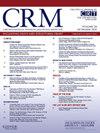单独使用体外膜肺氧合与联合使用经皮左心室辅助装置的院内疗效对比。
IF 1.9
Q3 CARDIAC & CARDIOVASCULAR SYSTEMS
引用次数: 0
摘要
背景:静脉-动脉体外膜氧合(ECMO)与后负荷增加和心肌恢复受阻有关。在 ECMO 的基础上增加经皮左心室辅助装置(pLVAD)是减轻左心室负荷的一种策略。我们评估了单纯 ECMO 与 ECMO 加 pLVAD 治疗心源性休克患者的院内预后:我们利用 2011 年至 2019 年的全国住院患者抽样数据库进行了一项回顾性研究。结果:共纳入 20171 名患者。16064名患者(79.6%)仅接受了ECMO治疗,4107名患者(20.4%)接受了ECMO加pLVAD治疗。ECMO 加 pLVAD 组的死亡率、中风、急性肾损伤、心包并发症和血管并发症发生率较高。调整协变量后,联合疗法与较高的死亡率(OR 1.2;95 % CI [1.1-1.3])和中风率(OR 1.3;95 % CI [1.2-1.5])相关,但出血率较低(OR 0.7;95 % CI [0.68-0.81])(P 结论:ECMO 加 pLVAD 组的死亡率和中风率均高于 ECMO 加 pLVAD 组:在所有患者中,ECMO 加 pLVAD 会增加死亡率和中风发生率,但会减少出血量。在 ACS-CS 亚组中,ECMO 加 pLVAD 与死亡率和中风增加有关,但出血率与单用 ECMO 相似。本文章由计算机程序翻译,如有差异,请以英文原文为准。
In-hospital outcomes with extracorporeal membrane oxygenation alone versus combined with percutaneous left ventricular assist device
Background
Veno-arterial extracorporeal membrane oxygenation (ECMO) is associated with increased afterload and hindered myocardial recovery. Adding a percutaneous left ventricular assist device (pLVAD) to ECMO is one strategy to unload the left ventricle. We evaluated in-hospital outcomes in cardiogenic shock patients treated with ECMO alone versus ECMO plus pLVAD.
Methods
We conducted a retrospective study using the National Inpatient Sample database from 2011 to 2019. Logistic regression analysis was performed to adjust for covariates.
Results
20,171 patients were included. 16,064 (79.6 %) patients received ECMO alone and 4107 (20.4 %) patients received ECMO plus pLVAD. The ECMO plus pLVAD group had higher rates of mortality, stroke, acute kidney injury, pericardial complications, and vascular complications. After adjusting for covariates, combined therapy was associated with higher rates of mortality (OR 1.2; 95 % CI [1.1–1.3]) and stroke (OR 1.3; 95 % CI [1.2–1.5]), however lower bleeding (OR 0.7; 95 % CI [0.68–0.81]) (p < 0.001 for all). After adjusting for covariates, a subgroup analysis of 5019 patients with acute coronary syndrome cardiogenic shock (ACS-CS) demonstrated higher rates of mortality (OR 1.3; 95 % CI [1.2–1.5]) and stroke (OR 1.7; 95 % CI [1.4–2.1]; p < 0.001 for all) with combined therapy, however similar rates of bleeding compared to ECMO alone (OR 0.95; 95 % CI [0.8–1.1]; p = 0.54).
Conclusions
In the overall group, ECMO plus pLVAD was associated with increased mortality and stroke, however decreased bleeding. In a sub-group of ACS-CS, ECMO plus pLVAD was associated with increased mortality and stroke, however similar rates of bleeding compared to ECMO alone.
求助全文
通过发布文献求助,成功后即可免费获取论文全文。
去求助
来源期刊

Cardiovascular Revascularization Medicine
CARDIAC & CARDIOVASCULAR SYSTEMS-
CiteScore
3.30
自引率
5.90%
发文量
687
审稿时长
36 days
期刊介绍:
Cardiovascular Revascularization Medicine (CRM) is an international and multidisciplinary journal that publishes original laboratory and clinical investigations related to revascularization therapies in cardiovascular medicine. Cardiovascular Revascularization Medicine publishes articles related to preclinical work and molecular interventions, including angiogenesis, cell therapy, pharmacological interventions, restenosis management, and prevention, including experiments conducted in human subjects, in laboratory animals, and in vitro. Specific areas of interest include percutaneous angioplasty in coronary and peripheral arteries, intervention in structural heart disease, cardiovascular surgery, etc.
 求助内容:
求助内容: 应助结果提醒方式:
应助结果提醒方式:


